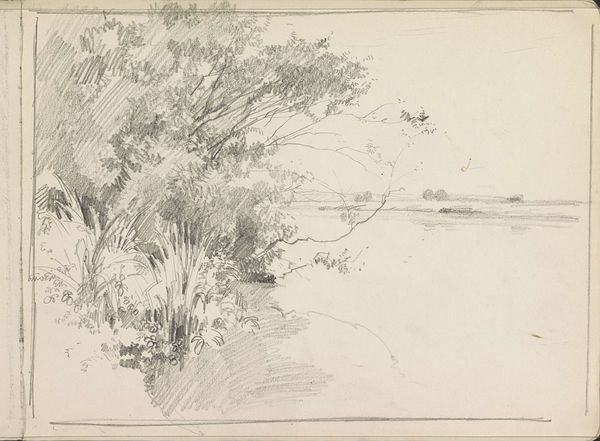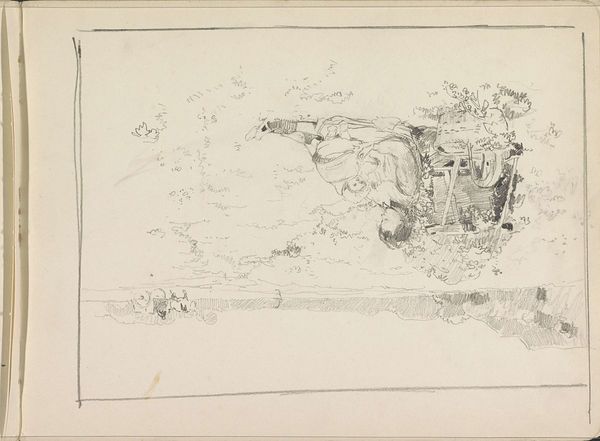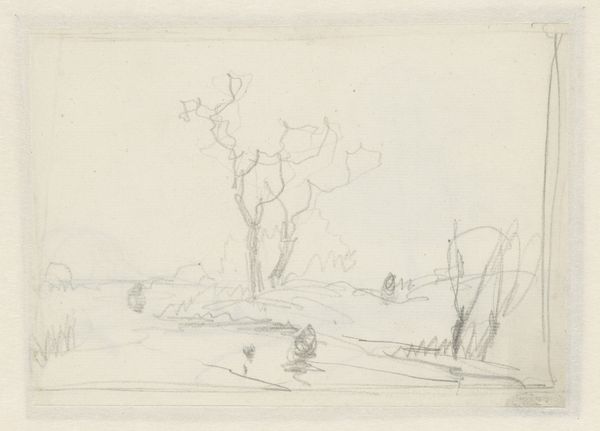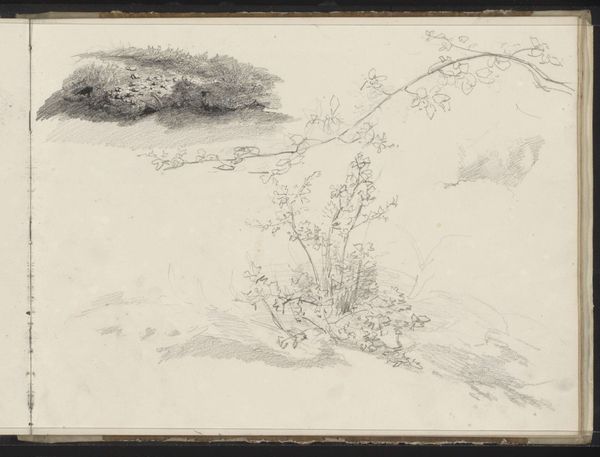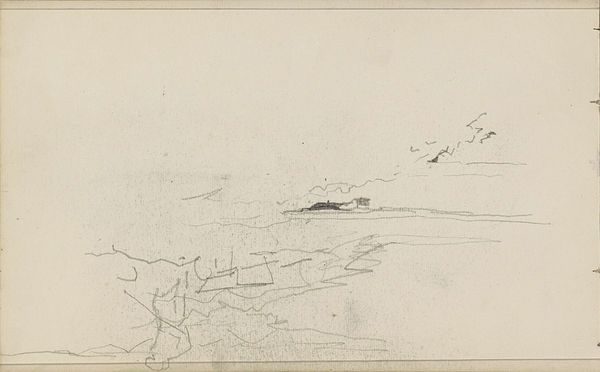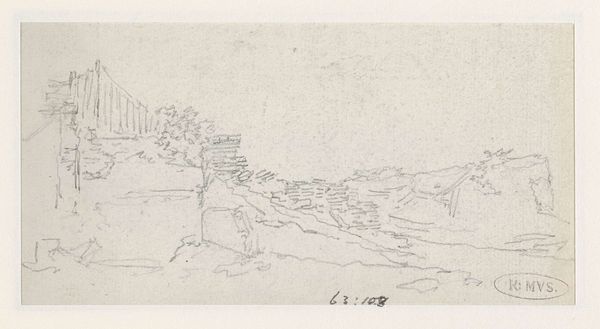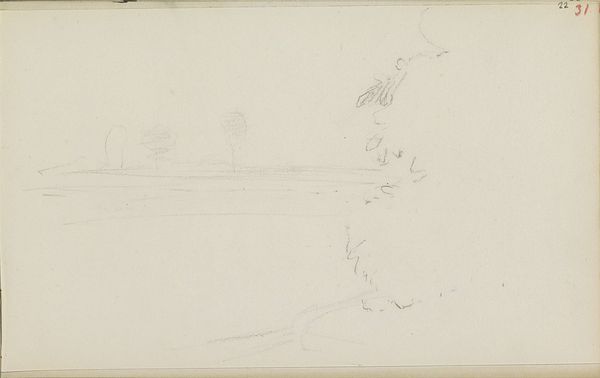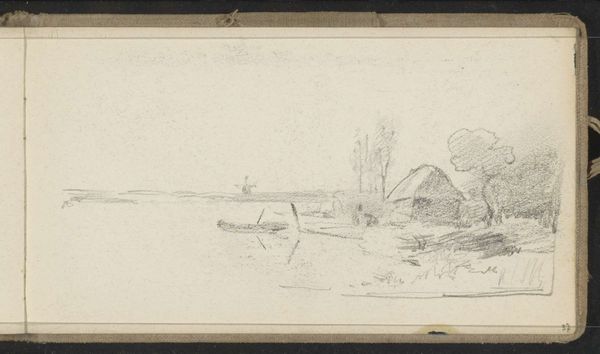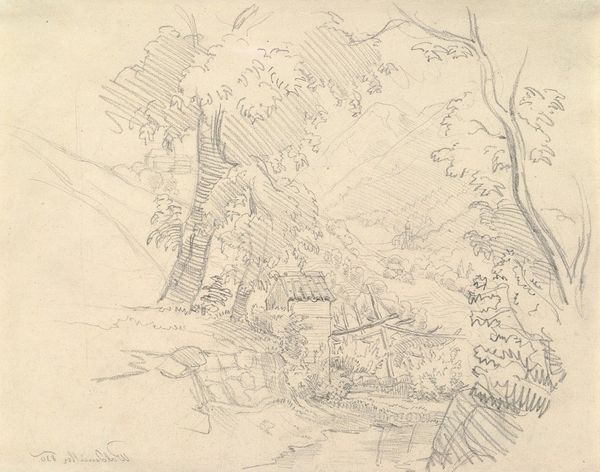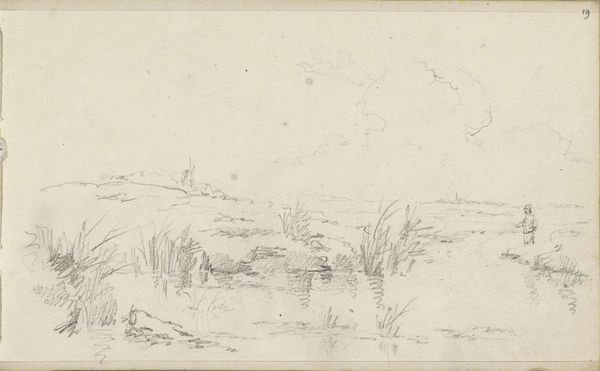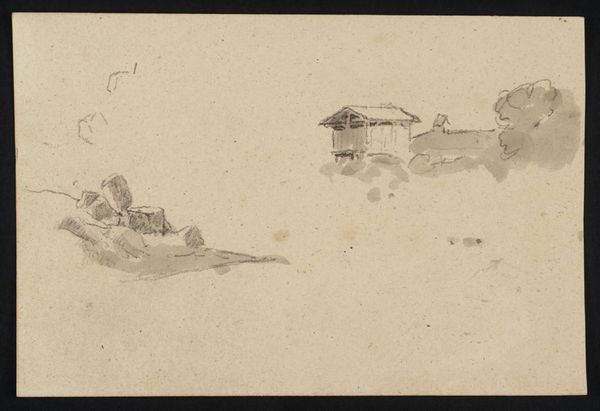
Dimensions: height 288 mm, width 430 mm
Copyright: Rijks Museum: Open Domain
Editor: This is "Vlinders vangen" – or "Catching Butterflies" – an ink drawing by Kajita Hanko, made sometime between 1890 and 1900. It's so delicate. The figures almost seem to float across the page. How do you interpret this work? Curator: It’s interesting that you say ‘float.’ Consider the Ukiyo-e tradition it draws from, which often reflects transient beauty and the ephemeral nature of life. The act of catching butterflies, specifically, can be viewed through the lens of colonial practices of the time. Is it a celebration of innocence, or a commentary on the capture and possession of the natural world? Editor: I hadn't thought about that at all. I was just seeing playful children. Is it possible the artist was trying to say something about Japanese identity in that period? Curator: Absolutely. Consider how the landscape is depicted alongside these figures. Are they harmoniously integrated, or is there a sense of disconnect? Think about the artist’s position in society and what commentaries on power dynamics could be inferred here. Editor: So, beyond just a pretty picture, this drawing might be talking about cultural identity and maybe even resistance to outside influence? The seemingly harmless scene has a powerful subtext. Curator: Precisely. It's in these quiet visual cues that we find narratives about gender, identity, and resistance embedded within artistic traditions. Recognizing the cultural and historical backdrop really opens the piece up to new layers of meaning. Editor: Wow, I see it so differently now. Thanks! I’ll definitely be looking for those kinds of hidden messages in other works. Curator: My pleasure. Keep questioning, and keep exploring those contexts. The art is waiting for our questions to make a response.
Comments
No comments
Be the first to comment and join the conversation on the ultimate creative platform.
